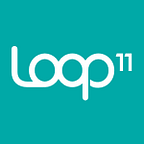Lean UX Design revolutionized the way UX professionals approached their field. It took very specific management pain points and dissected them, allowing UX designers to develop more agile, more effective methods for creating products.
Lean UX today is an essential tool with which UX professionals are able to build better, more polished products. But what exactly is Lean UX and how does it work?
Today we’re going to take a deep dive into Lean UX Design: what it is, its different aspects and phases, and how it can help you achieve success with your digital products.
What is Lean UX Design?
Lean UX design can trace its origins back to Jeff Gothelf, a UX team leader and organizational designer. After seeing frustrations with his team while working at TheLadders, he developed a system that would address their exact pain points with their management system. In 2013, he published “Lean UX: Designing Great Products with Agile Teams”, taking what he’d learned from his team and constructing a teachable methodology to help others.
Gothelf’s book laid the foundations for the current ways that companies handle their UX process, introducing a system that emphasizes:
- Removing waste. Lean UX is designed to cut through typical, time-consuming tactics such as frequent documentation by creating fewer viable products that quickly drive learning.
- Constant collaboration. The system seeks to close the gap between designers, developers, product managers, etc through frequent communication and contact.
- More experimentation. UX designers engage in rapid experimentation with their works to facilitate more grounded information and better product lessons.
At the core of Lean UX is the concept of radical transparency. Teams communicate their findings consistently and often so that they might address any roadblocks and engage in the work required to deliver a product quickly.
Nine aspects of Lean UX Design
Lean UX Design has nine key characteristics. These are:
- Small, interdisciplinary teams: Lean UX teams are typically made up of one person from each area who is able to provide valuable insights while still being agile.
- Result-centered: Lean UX Design focuses on its testing results rather than developing iterations.
- Eliminate waste: Lean UX promotes the optimization of your effort and encourages you to stop wasting your time on non-essential tasks.
- Validate each step with small deliveries: Lean UX begins with the essential and pushes you to only add things you can prove are necessary.
- Constant learning: Lean UX focuses on feedback and user testing, understanding that it’s the most effective way to build digital products.
- Making rather than over-thinking: Lean UX encourages you to test what you have and improve on it, rather than over-analyzing the process.
- Early understanding of the problem: Lean UX ensures you have a total grasp of the problem you’re trying to solve before you engage in the design phase.
- Mistakes: Lean UX allows for making mistakes, understanding that this is where you’ll learn the most important things about your product.
- Listening to your team: Lean UX encourages you to engage with your team and take their ideas and advice on board.
Three phases of Lean UX Design
Lean UX is underpinned by 3 basic concepts: think, make, and check. While it may be tempting to think of these phases as a straight line, they’re actually more cyclical. Lean UX is a cycle that iterates, with the product advancing and improving each time the cycle is finished and started over.
Let’s break down each concept.
Think
The Think phase refers to the creation of assumptions about a given problem and what you think you understand about the particular area. Such assumptions are essential because eventually, they give you new knowledge which can then be turned into hypotheses. Some other aspects of the Think phase include:
- Research
- Mental models
- Ideation
- Storyboards
- Sketches
Make
Make is the phase in which you design a Minimum Viable Product (MVP). An MVP allows you to engage your audience with a bare minimum, beginning the iteration-feedback loop.
An example of an MPV might be a landing page for a product that doesn’t exist yet, allowing you to gauge consumer interest.
This phase is massively iterative — you start with the bare bones and build upon it. Some other methods for developing an MVP include:
- Prototypes
- Value propositions
- Wireframes
- Hypotheses
- Landing pages
Check
Check is the final phase in the Lean UX Design loop. In this stage, you go about testing your MVP with your target market to either validate or invalidate it. From there, you take your newfound knowledge back to the Think phase and start the process over again.
You have to understand that you won’t be testing a polished MVP or a complete, interactive prototype. The testing process starts small, using the section of the product that was developed previously. This might mean you’re testing only the navigation system or the information architecture. The key is that testing happens frequently and focuses on small aspects that were decided on during the step previous.
The Check phase typically sees you carry out:
- A/B testing
- Usability testing
- Site analytics
- Customer meetings
- Feedback systems
Lean UX Design is the most effective way to design products
Lean UX Design has had enough time on the market now to prove itself as a singularly effective tool in the product design arsenal. With Lean UX, you’ll be able to save time, energy, and money — designing products that speak directly to your target market and take their wants and needs into account.
By engaging in Lean UX, you’re empowering your team to make the best possible decisions regarding their work and involvement in the product design process. In doing so, you’re ensuring your end product is as efficient and polished as possible.
Looking to get started with Lean UX Design today? Here’s a comprehensive course that will help you do just that.
